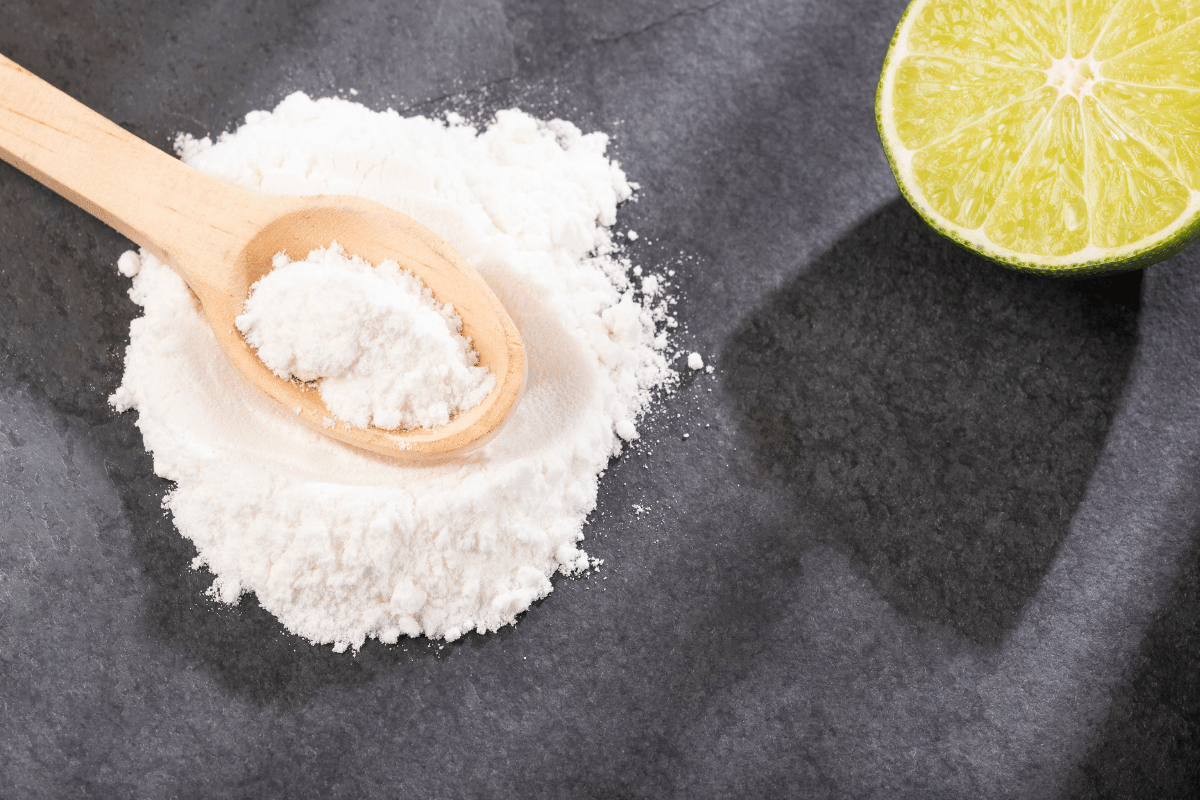Environmental Advantages of Carboxy Cellulose-Based Water Mud in the Oil Field
In the realm of modern industry, where innovation is a driving force, a chemical known as Carboxymethylcellulose (CMC) has emerged as a versatile solution, particularly in the context of the petroleum sector. CMC, derived from cellulose, a natural polymer, showcases remarkable properties that have led to its integration into various industrial applications. This polymer’s distinct characteristics and its compatibility with environmentally conscious practices make it a prime candidate for revolutionizing drilling processes in the oil field.
Carboxymethylcellulose is a cellulose derivative achieved through the introduction of carboxymethyl groups onto cellulose molecules. This chemical manipulation enhances its solubility in water and introduces anionic charges, enabling CMC to effectively interact with other compounds. Its molecular structure imparts unique attributes such as high water retention, film-forming capabilities, and the ability to modify viscosity. These features set the stage for CMC’s significant contributions within the petroleum sector, particularly in the realm of drilling fluids and related processes.
As the demand for sustainable practices gains traction across industries, Carboxy Cellulose stands as a beacon of environmental compatibility. Its inherent biodegradability aligns seamlessly with efforts to minimize the ecological footprint of drilling operations. Moreover, CMC’s versatility extends to various functionalities that aid in cooling drill bits, suspending rock cuttings, and maintaining the stability of wellbores. This paper delves into the multifaceted role of CMC in petroleum operations, emphasizing its pivotal contributions to eco-friendly drilling practices and environmental preservation.

Traditional Drilling Fluids: The Environmental Challenge
In the high-stakes world of oil exploration, drilling fluids, also known as drilling muds, play a paramount role in facilitating the extraction of hydrocarbons from beneath the Earth’s surface. Traditional drilling fluids have long been the backbone of these operations, offering critical functionalities such as cooling and lubricating the drill bit, suspending rock cuttings, and maintaining wellbore stability. However, this convenience has come at a significant cost to the environment, prompting a search for greener alternatives.
Conventional drilling fluids typically fall into two categories: oil-based muds (OBMs) and synthetic-based muds (SBMs). While these fluids excel in their operational efficacy, they pose substantial environmental challenges. Both OBMs and SBMs are composed of non-aqueous, hydrocarbon-based components that are inherently toxic to aquatic life and ecosystems. The discharge of these fluids into the environment can lead to water pollution, soil contamination, and damage to marine habitats. Furthermore, the disposal of waste from these drilling fluids presents logistical and ethical dilemmas, as the toxic content requires specialized handling and treatment.
As the global consciousness shifts towards sustainability, the petroleum industry faces mounting pressure to adopt environmentally responsible practices. The harmful effects of traditional drilling fluids on ecosystems and local communities are increasingly scrutinized, and the industry is being called upon to prioritize ecological preservation without compromising operational efficiency. This shift in focus has paved the way for the exploration of alternative drilling fluid solutions that minimize environmental impact while upholding performance standards.
The advent of Carboxymethylcellulose (CMC)-based water muds has offered a promising response to the environmental challenge posed by traditional drilling fluids. These water muds, also referred to as water-based muds (WBMs), harness the unique properties of CMC to create drilling fluids that are inherently less toxic and more biodegradable. The integration of CMC into drilling fluid formulations provides the necessary viscosity, suspension, and stability, enabling efficient drilling while reducing the ecological footprint.
In the subsequent sections, we delve into how Carboxy Cellulose contributes to the transformation of drilling practices, championing eco-friendly alternatives that align with the industry’s commitment to environmental stewardship. The role of CMC as a versatile solution within the petroleum sector emerges as a beacon of hope, promising operational excellence without compromising the delicate balance of our planet’s ecosystems.

The Role of CMC in Drilling Fluids
As the petroleum industry navigates the delicate balance between operational efficiency and environmental responsibility, the integration of Carboxymethylcellulose (CMC) into drilling fluids emerges as a transformative solution. CMC’s unique chemical properties empower it to serve as a multifunctional additive, addressing key challenges in drilling processes while aligning with eco-friendly practices.
One of the primary roles of CMC in drilling fluids is that of a thickening and suspension agent. The polymer’s ability to modify viscosity and enhance suspension is instrumental in maintaining the effectiveness of drilling fluids. When CMC is introduced into the fluid mixture, its molecular structure interacts with water molecules, resulting in the formation of a colloidal dispersion. This dispersion imparts increased viscosity to the fluid, ensuring that rock cuttings and other solid particles remain suspended rather than settling at the bottom of the wellbore. The significance of this role cannot be overstated, as efficient cuttings suspension facilitates their removal from the well, preventing clogs and ensuring uninterrupted drilling operations.
Furthermore, CMC plays a pivotal role in cooling the drill bit, transporting rock cuttings, and maintaining wellbore stability. During drilling, the friction generated between the drill bit and the rock formations can lead to excessive heat buildup, potentially damaging the bit and compromising drilling efficiency. CMC’s unique film-forming capabilities provide a protective barrier that reduces friction and heat, prolonging the life of the drill bit and minimizing wear and tear.
As drilling progresses, CMC-enhanced fluids effectively carry rock cuttings to the surface, preventing their accumulation within the wellbore. This, in turn, prevents blockages that could hinder the drilling process. Additionally, CMC’s water retention properties contribute to wellbore stability by mitigating the risk of well collapse. The polymer forms a protective layer that reinforces the wellbore walls, enhancing their structural integrity and minimizing the potential for instability.
In essence, Carboxy Cellulose acts as a versatile ally in drilling fluids, addressing the core challenges of cuttings suspension, wellbore stability, and cooling. Its unique blend of properties empowers drilling operations to proceed smoothly while reducing the ecological impact of traditional drilling fluids. As we move forward, the exploration of CMC’s potential expands beyond drilling fluids, encompassing broader applications in well completion and cementing operations, further solidifying its position as an invaluable component in the petroleum industry’s quest for sustainability.

Environmental Benefits of CMC-Based Water Mud
In the ever-evolving landscape of the petroleum industry, the quest for environmentally friendly practices has gained unprecedented momentum. Amid this paradigm shift, Carboxymethylcellulose (CMC)-based water muds have emerged as a beacon of sustainability, revolutionizing drilling operations by reducing their ecological footprint and offering a more environmentally responsible alternative to traditional oil-based drilling fluids.
Compared to conventional oil-based muds (OBMs) and synthetic-based muds (SBMs), CMC-based water muds stand out due to their inherently lower environmental impact. Traditional drilling fluids, rich in hydrocarbons and non-aqueous components, pose substantial risks to aquatic ecosystems and biodiversity. The discharge of these fluids into the environment can lead to water pollution, soil contamination, and the disruption of fragile marine habitats. In contrast, CMC-based water muds leverage the natural biodegradability of Carboxymethylcellulose to significantly reduce the toxicity associated with drilling operations.
Biodegradability is a hallmark attribute of CMC that underscores its compatibility with environmentally conscious practices. As water muds containing CMC are introduced into the wellbore, the polymer eventually breaks down into its natural components under the influence of microbial activity. This process ensures that the drilling fluid residues are transformed into harmless substances that do not linger in the environment, thus minimizing long-term ecological impact.
Another compelling advantage of CMC-based water muds is the reduction in toxic waste disposal. Traditional drilling fluids necessitate specialized handling and disposal methods due to their toxic content. This poses challenges not only in terms of logistics but also in terms of adhering to strict environmental regulations. With CMC-based water muds, the need for such elaborate waste management procedures is diminished, as the polymer’s biodegradability aligns with waste management practices that prioritize sustainability.
The adoption of CMC-based water muds not only minimizes environmental risks but also contributes to the broader ethos of responsible resource extraction. In a world increasingly aware of the finite nature of natural resources, the petroleum industry is compelled to explore avenues that minimize waste and promote efficient resource utilization. CMC-based water muds, with their reduced waste and lower impact on ecosystems, exemplify a step towards more conscientious resource management.
In the subsequent sections, we delve deeper into the specialized uses of CMC in the oil field, exploring its role in preventing wellbore leakage, reducing friction, and promoting water-based muds as eco-friendly alternatives. The versatility of CMC not only enhances drilling operations but also bolsters the industry’s commitment to sustainable practices, marking a pivotal moment in the trajectory towards a greener future for petroleum operations.

Specialized Uses of CMC in the Oil Field
In the intricate tapestry of oil field operations, Carboxymethylcellulose (CMC) emerges as a versatile solution with specialized applications that transcend its role as a mere drilling fluid additive. Beyond its contributions to cuttings suspension and wellbore stability, CMC plays a pivotal role in addressing specific challenges and enhancing operational efficiency within the oil field environment.
Wellbore Leakage Prevention: CMC as a Sealant
One of the critical challenges in oil well drilling is the potential for wellbore leakage, which can lead to uncontrolled fluid migration between different geological formations. Carboxymethylcellulose rises to the occasion by offering its unique properties as a sealant. When introduced into drilling fluids, CMC molecules can effectively bridge and plug micro-fractures or pores in the formation. As the drilling fluid encounters these porous zones, the CMC molecules expand, creating a sealant layer that prevents fluid losses. This mechanism not only conserves drilling fluid but also safeguards against differential sticking and uncontrolled fluid migration, ensuring drilling operations proceed smoothly.
Wellbore Lubrication: Reducing Drill Bit Wear and Tear
Friction between the drill bit and the wellbore poses a significant challenge during drilling operations. The wear and tear resulting from this friction can lead to increased maintenance costs and reduced drilling efficiency. Here again, Carboxymethylcellulose showcases its lubricating prowess. When incorporated into drilling fluid formulations, CMC forms a protective layer that reduces the friction between the drill bit and the formation. This layer minimizes wear on the drill bit, extends its lifespan, and optimizes drilling performance. The result is not only reduced operational costs but also a decrease in the need for frequent tool replacements, further enhancing the efficiency of drilling operations.
The Significance of Water-Based Mud: An Eco-Friendly Alternative
Water-based muds (WBMs) have emerged as an eco-friendly alternative to traditional oil-based muds, and Carboxymethylcellulose plays a crucial role in their efficacy. WBMs, with their reduced environmental impact, are increasingly favored for their biodegradability and lower toxicity. CMC’s compatibility with water-based systems makes it a natural fit for enhancing the properties of these muds. By contributing to the viscosity, stability, and suspension of cuttings within WBMs, CMC ensures that the benefits of water-based systems are harnessed to their fullest extent. This dual partnership of CMC and WBMs paves the way for drilling practices that are not only operationally efficient but also ecologically responsible.
In the subsequent sections, we delve into CMC’s contribution to cementing operations and explore the conclusion of this journey, underscoring the comprehensive impact of CMC on petroleum processes. As we navigate through these specialized applications, it becomes evident that Carboxymethylcellulose is more than an additive—it’s an enabler of solutions that address industry challenges and elevate the standard of drilling operations within the framework of sustainable practices.

CMC in Cementing Operations
As the oil and gas industry advances, the significance of ensuring wellbore integrity and longevity becomes increasingly pronounced. This pursuit of operational excellence extends to the critical phase of well completion, where cementing operations play a pivotal role. In this context, Carboxymethylcellulose (CMC) emerges as a crucial component, contributing to the success of cementing slurries and the overall structural soundness of the wellbore.
Use of CMC as a Thickener in Cementing Slurries
Cementing slurries serve as the foundation of well completion, ensuring that the casing is securely anchored and isolated from surrounding formations. Achieving the right consistency and viscosity of cement slurry is imperative for its successful placement and solidification. Here, Carboxy Cellulose demonstrates its prowess as a thickening agent. When introduced into cement slurries, CMC’s molecular structure interacts with water molecules, resulting in a colloidal dispersion that imparts viscosity. This controlled thickening is instrumental in preventing issues such as slurry separation, ensuring that the cement remains homogeneously mixed and well-distributed during placement.
Ensuring Homogeneous Distribution and Solidification
The efficacy of cementing operations relies on the uniform distribution and proper solidification of the cement slurry within the wellbore. Uneven distribution can lead to voids, weak points, and compromised well integrity. Carboxymethylcellulose plays a pivotal role in addressing this challenge. Its ability to improve suspension and viscosity ensures that the cement particles remain evenly dispersed, minimizing the risk of separation and settling. This even distribution guarantees the uniform setting of the cement, facilitating its consolidation into a solid, impermeable barrier within the wellbore.
The contributions of CMC to cementing operations extend beyond the immediate completion phase. As the cement ages and cures, Carboxymethylcellulose continues to exert its influence. The polymer’s water retention properties ensure that the curing process is controlled and gradual, leading to improved cement strength and durability. This attribute is crucial in maintaining long-term well integrity and preventing issues such as cement cracking or degradation.
In summary, Carboxymethylcellulose enriches cementing operations by ensuring proper thickening, uniform distribution, and controlled solidification of cement slurries. Its presence extends the wellbore’s lifespan, safeguarding against structural vulnerabilities and contributing to the overall efficiency and reliability of well completion processes. As we approach the conclusion of this exploration, we delve into the overarching impact of CMC within the petroleum industry, reflecting on its sustainable practices and transformative capabilities.
In the ever-evolving landscape of the petroleum industry, Carboxymethylcellulose (CMC) stands as a beacon of transformation and sustainability. This unassuming chemical has transcended its origins to redefine drilling practices, intertwining operational efficiency with environmental consciousness.
From its fundamental chemical properties to its multifaceted roles in drilling fluids, CMC has showcased its adaptability. As the industry grapples with the environmental challenges of traditional drilling fluids, CMC-based water muds emerge as an eco-friendly solution that reduces toxicity, waste, and ecological impact.
CMC’s journey within the oil field extends to specialized applications, from preventing wellbore leakage to reducing friction. Its partnership with water-based muds exemplifies the marriage of efficiency and sustainability.
In cementing operations, CMC’s role ensures not just immediate success but long-term integrity. As we conclude, it’s clear that Carboxy Cellulose isn’t merely a chemical—it’s a cornerstone of a greener, more responsible petroleum industry. The alliance between innovation, efficiency, and environmental stewardship forged by CMC promises a future where progress walks hand in hand with sustainability.
References and Further Reading
- Chen, Y., Liu, L., & Ni, Y. (2016). Carboxymethyl cellulose: preparation and applications. Cellulose Science and Technology, 20(2), 129-149.
- Costa, L. M., Pereira, J. H. O. S., Fernandes, L. S., & Lopes, J. C. (2018). Utilization of Carboxymethylcellulose (CMC) in drilling fluids: a review. Journal of Petroleum Science and Engineering, 170, 48-60.
- Dixon, D. R., & Adamson, J. J. (2019). Eco-friendly drilling fluid technology: a review. Journal of Petroleum Science and Engineering, 178, 832-846.
- Guo, Q., Liu, J., Liu, M., Yao, Y., Lu, X., Zhang, W., & Liu, Z. (2019). A study on the rheological property of oil-based drilling fluids with carboxymethylcellulose (CMC) and nanoparticles. Journal of Molecular Liquids, 274, 509-517.
- Li, H., & Chen, S. (2018). Carboxymethyl cellulose (CMC)-assisted biomineralization of calcium carbonate: mechanisms and applications. Green Chemistry, 20(9), 2033-2048.
- Mehdi, M., & Tabatabaei, M. (2020). An experimental study on the rheological behavior of water-based mud containing carboxymethyl cellulose (CMC) and silica nanoparticles. Journal of Petroleum Science and Engineering, 188, 106906.
- Salehi, S., & Alahyarizadeh, G. (2017). Sustainable drilling fluid formulation using carboxymethyl cellulose biopolymer as a viscosity enhancer. Journal of Molecular Liquids, 241, 306-316.
- Swann, M., Fjaer, E., & Okland, J. (Eds.). (2019). Advanced Well Completion Engineering. Elsevier.
- Bourg, I. C., & Sposito, G. (Eds.). (2017). The Geochemistry of Mineral Surfaces. Mineralogical Society of America.
- Amer, M. (Ed.). (2018). Drilling Fluids Processing Handbook. Elsevier.
- Tiab, D., & Donaldson, E. C. (2016). Petroleum Production Systems. Gulf Professional Publishing.
- Gray, G. R., & Darley, H. C. H. (2018). Composition and Properties of Drilling and Completion Fluids. Gulf Professional Publishing.
- LINYI VIHO CHEM CO.,LTD
- Wechat: 17762049811
- Tel: +86-17762049811
- Mobile: +86 17762049811
- Address: Lizhuang Town, Linyi, Shandong











